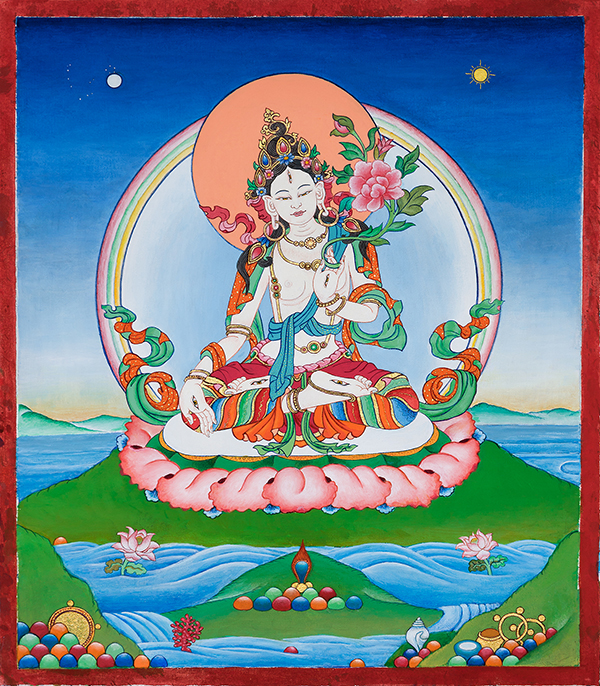
| LOST SADHANAS.ORG | THE LOST SADHANAS PROJECT |

This completes our discussion of the lost sadhanas of bird-headed dakinis. The discussion and sadhanas of the Vajra Yogini comes next.The Vajra Dakini says,
The seventh and last of the avian dakini forms is the sparrow, the tiny bird that is easily overlooked. This brings the quality of humility, the willingness to work to help others without acknowledgement or appreciation. Having shared awareness with all sentient beings, the yogi must also be willing to give it all up. The sparrow is willing to live on the crumbs of others, to move unnoticed through land and air, and its tiny size makes it almost invisible.
The sparrow combats the sin of vanity. It is easy for the egos of spiritual travelers to become swollen with pride, for they have seen more of the universe than others. They can be proud of knowing more, like the Vedic rishis, but as Buddhists, they may also claim to exist less. One can be proud of being something, but also of being nothing. The universe may be an illusion, but somehow the ego manages to survive.
The sparrow barely casts a shadow. It can observe without anybody else observing it. It accepts being overlooked.
The sparrow deals with the sacrifice of the ego as the vulture deals with the sacrifice of the body. The vulture eats the manifestations of bad karma, the sins of the body, with its desires, hatreds, and compulsions. The sparrow casts off power and glory leaving the worlds of the infinite to make small changes in the manifest world.
The hawk and the eagle may be spiritual heroes, flying hight towards enlightenment, and bringing back new spiritual knowledge. They can be models and prophets who stand above the crowd. But the envy of others will often get in the way, and their revelations may be attacked and destroyed.
But the sparrow travels unnoticed, ignored, and demeaned. Yet he can help and feed others without their knowledge. He can care for and serve invisibly. He is good action for its own sake, which does not require thanks.
For this role, the yogi should be in the forest. He or she should recognize the ways that nature interacts, seeing its web of life from tiny insects to great trees to the sky above. It is the great net of interdependence, and those who are powerful and proud are as much a part of it as those who are tiny and sorrowful. All interact together.
Call me down as a living being in the web of universal life, as a tiny gem in the vast jeweled net, as a sparkling grain of sand on an endless beach. Call on me as one who helps others without recognition, a tiny drop of water in the midst of fiery clouds.
All of these dakini forms represent ways of working on the human identity and abilities. These teachings are not from the emptiness school, where human beings are empty, dakinis are empty, and identifying with each other just makes us realize how empty and meaningless we are.I am from the Old Mahayana wing of Vajrayana, where sentient beings exist enough to make them worth caring about. Who cares about an empty shell? We are all conscious beings during our travels through the realms of rebirth, and we do not force final emptiness before its time. Like a mango, we ripen and become sweet, before we dissolve into the shining Void.
Please click on the [ NEXT ] link below to continue.
[ BACK ] The Vajra Dakini - The Goose-Headed Form of the Dakini [ NEXT ] End of the Vajra Dakini Bird-Headed Series - Introduction to the Vajrayogini
Introduction | Methodology - Participant/Observer | The Bodhi Tree Sadhanas | Vajra Dakini Discussion | Vajra Dakini Commentary | Vajra Dakini Sadhanas | Vajra Yogini Commentary | Maitreya Sadhanas | Green Tara Commentaries and Sadhanas | Vajradhara Speaks About Yidams | Lost Sadhanas Conclusion